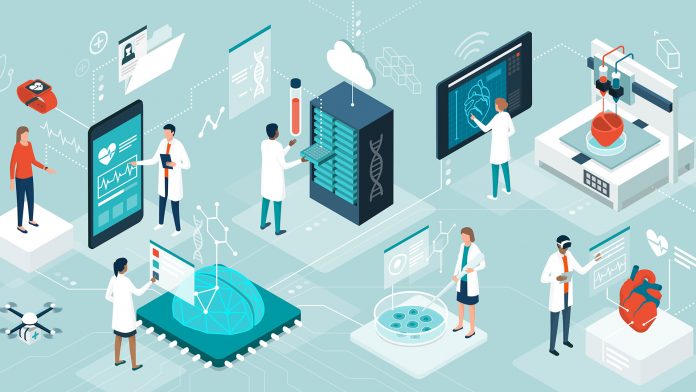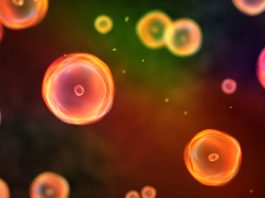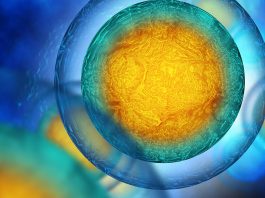Drs Kei Kanie and Ryuji Kato from Nagoya University are trying to break open the data-driven cell culture process development concept to ensure that the future of cell manufacturing will promise quality cell therapy products.
Advanced therapy is now providing patients new hopes for incurable diseases. Biopharmaceutical industries are now pouring great effort into the development of cell manufacturing processes for cells as a drug product. Historically speaking, the development and distribution of a drug product made from a living raw material, patient or donor cells, is a new challenge to.
The success of cell manufacturing depends on how much we can control cell culture. Although cell culture has a history of almost 100 years, nearly the same as that for gasoline-based cars, present cell cultures rely on craftsmanship, while cars are massively produced worldwide using automation. Moreover, the safety of cars improved drastically following their maturation in industrial manufacturing. From this example, we can say that innovation in manufacturing is the key to changing not only availability and cost, but also the safety of a product.
‘Technology x mindset’ is the key
Our group has been challenged to introduce the advanced engineering technologies to achieve consistent cell manufacturing by the support of AMED (Japan Agency for Medical Research and Development). 1,2 In Japan, AMED has been leading the national project (project leader is Professor Masahiro Kino-oka) which is designed to fuse cutting-edge sciences and technologies to innovate cell culture. The project’s final goal is to develop an ecosystem to enable successful cell manufacturing for promising advanced therapies. This project studies the ‘controllability’ (designated as ‘manufacturability’) of cells from a manufacturing point of view, given that bridging academia and industry is extremely important in this field.
Through the project we have found that there are two things that can change the success rate of cell manufacturing. One is simply the introduction of advancing technologies to enhance cell culture automation. The other, which is perhaps more important, is the development of a new mindset for cell manufacturing.
The mindset that is needed for the future of cell manufacturing is not focused on the beauty of craftsmanship. It is rather to restrain oneself with ‘risk-based thinking’; to think continuously about cause and effect. Since the gap between lab-scale and industry-scale can be incredibly wide, it is never too early for this new mindset to be implemented.
QMS (quality management system), which is essential to the biopharmaceutical industry, is key in achieving this mindset, despite the fact that many basic researchers will be unfamiliar with it. A whitepaper by H. Hagen and S. Viswanathan of Vineti provides an excellent introduction to QMS for advanced therapies.3 QMS is, in fact, the most widely and effectively used framework for industrial quality management described by the ISO (International Organization for Standardization) worldwide. QMS carves out the most essential mindset for sustainable quality. As such, once this mindset is recognised then the same spirit of quality management can be shared. If this were to be translated into an academic expression, we could argue that QMS requires one to ‘not stick to the beauty of craftsmanship, but instead quantitate and think objectively.’ In other words, it reminds us that cell culture has to be more data-based.
Quantification of human actions in cell culture
Our group began to understand cell culture from a quantification of ‘how people move’ (what we refer to as the ‘flow line’) during their cell culture. By setting up two network cameras in the laboratory, we recorded 38 operators running daily subcultures (93 experiments) and quantified how they spent their time under the same culture protocol.4 We discovered two things:
- The efficacy of operators can be categorised by their mindset and can be improved easily by showing their action data
- The efficacy of the operation did not directly reflect the amount of experience the person had in the lab.
This unique investigation implies that ‘mindset’ is more important than ‘career length’, and one’s mindset can be improved effectively when one is presented with objective data.
Quantification of handling impacts in cell culture
The mechanisation of cell culture is a highly expected solution in cell manufacturing. However, the major problem is that no one can define the ‘parameter value’ needed to describe the impact of their hands (the impact of pipetting stress, vessel transfer speed, tapping strength, etc.). By collaborating with Nihon Kohden Corp., we quantitated the mechanical stress in cell culture. We quantified the vibration frequency and acceleration amplitudes, the two parameters that consist of mechanical vibration, to understanding the parameter range of vibration stress during cell culture.5 This revealed that not only tapping to collect cells, but also the shock of closing incubator doors or simply placing them onto a clean bench (which continuously vibrates due to the effect of motor fan) have unexpected vibration impact. As a result, we succeeded in designing an experiment to evaluate the level of vibration stress that is critical and what level of stress can be detected by AI image analysis. Quantification opened our eyes to the importance of the design space.
Quantification of culture status in cell culture
With difficult cells, craftsmanship is typically essential to establish cell culture. However, it is often difficult to understand what has changed and what made the improvement in a craftsman’s cell culture. We therefore attempted to quantify the effect of technical skill for subculturing iPS (induced pluripotent stem) cells by label-free AI image analysis. When we quantified the total profile of iPS colony morphologies between sub culture skillsets, our data revealed that the ‘expert technique’ is slightly better than ‘easy protocol’ but was more at risk of being affected by the technical level. In other words, the cost and benefit of ‘expert training’ and ‘automation design’ could be objectively discussed.
Quantification will lead us to the mindset for successful cell manufacturing
Our study indicates that cutting-edge technology such as AI image analysis can offer a great opportunity to change our present mindset in cell culture. Objective quantification efforts will lead us towards a deeper knowledge about the cell culture and should also lead us to realise the risks inherent in future cell manufacturing. It should be the next generation mindset that leads us to QMS, and thus to more consistent and more safer advanced therapy.
References
- Imai Y., Yoshida K., Matsumoto M., Okada M., Kanie K., Shimizu K., Honda H., and Kato R., (2019), ‘In-process evaluation of culture errors using morphology-based image analysis’. Regen. Ther., 9, 15-23
- Takemoto Y, Imai Y, Kanie K, and Kato R., (2020) ‘Predicting quality decay in continuously passaged mesenchymal stem cells by detecting morphological anomalies’. J Biosci. Bioeng., S1389-1723, 30371-30376
- https://vineti.com/resources/gated-file-pages/report-quality-management-strategies
- Kanie K., Sakai T., Imai Y., Yoshida K., Sugimoto A., Makino H., Kubo H., and Kato R., (2019), ‘Effect of mechanical vibration stress in cell culture on human induced pluripotent stem cells’. Regen. Ther., 12, 27-35
- Kanie K., Sasaki H., Ikeda Y., Tamada M., Togawa F., and Kato R., (2019), ‘Quantitative analysis of operators’ flow line in the cell culture for controlled manual operation’. Regen. Ther., 12, 43-54
- Yoshida K., Okada M., Nagasaka R., Sasaki H., Okada M., Kanie K., and Kato R., (2019), ‘Time-course colony tracking analysis for evaluating induced pluripotent stem cell culture processes’. J. Biosci. Bioeng., 128, 209-217
- Nagasaka R., Matsumoto M., Okada M., Sasaki H., Kanie K., Kii H., Uozumi T., Kiyota Y., Honda H., and Kato R., (2017), ‘Visualization of morphological categories of colonies for monitoring of effect on induced pluripotent stem cell culture status’. Regen. Ther., 6, 41-51 (2017)
Co-author
Dr Kei Kanie
Assistant Professor
Laboratory of Cell and Molecular Bioengineering
Graduate School of Pharmaceutical Sciences
Nagoya University
kanie-k@ps.nagoya-u.ac.jp
Please note, this article will also appear in the fifth edition of our quarterly publication.








